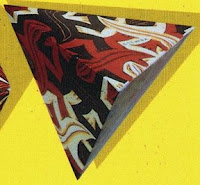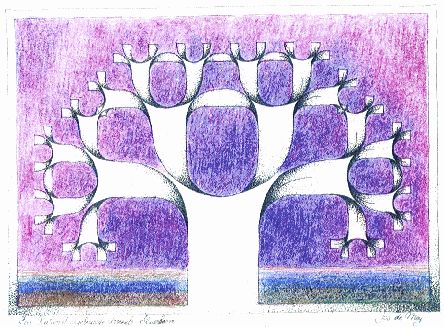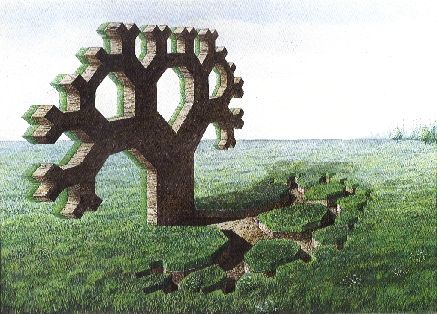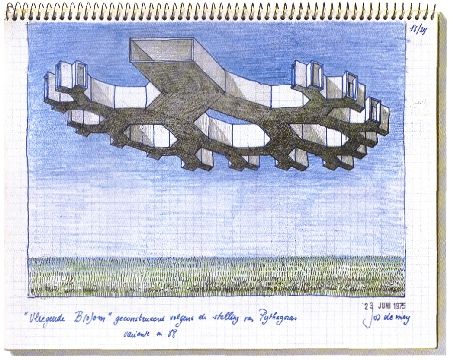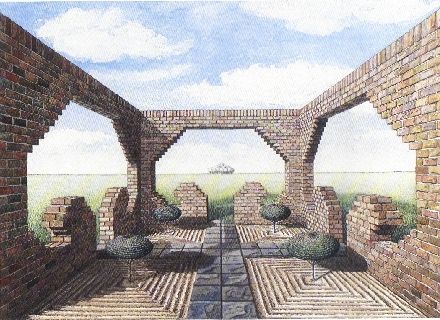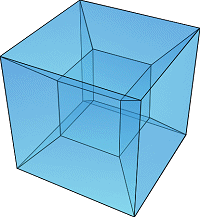 Nowadays anamoprhic art is rised again because of works of such famous artists as István Orosz, Kelly M. Houle, Julian Beever and Felice Varini.
Nowadays anamoprhic art is rised again because of works of such famous artists as István Orosz, Kelly M. Houle, Julian Beever and Felice Varini.
Hungarian artist István Orosz is well known for his artworks with impossible figures and constructions. He also tries to renew anamorphosis art. Frequently he uses etching tecnique for his artworks. Below you can see two views of his artwork "The Well" (1998). You can see the original image to the left, and a part of the same image with cylindrical mirror in the center of the well. We see face of M.C. Escher in the mirror.
Kelly M. Houle also creates anamorphic images for cylindic mirror. She working on projects including illustrating a children’s book manuscript, writing and illustrating a trilogy of fictional correspondence with an anamorphic theme. Below you can see anamorphic portrait of Leonardo da Vinci.

Julian Beever creates his artworks by chalk on roads and streets. His paintings can be viewed as real image from one point of view only.


Felice Varini paints (lines, concentric circles, triangles) on things (tunnels, castles, groovy interiors). A seemingly random smattering of elements that, viewed from a specific point in space, coalesce into a tangible planar element.

